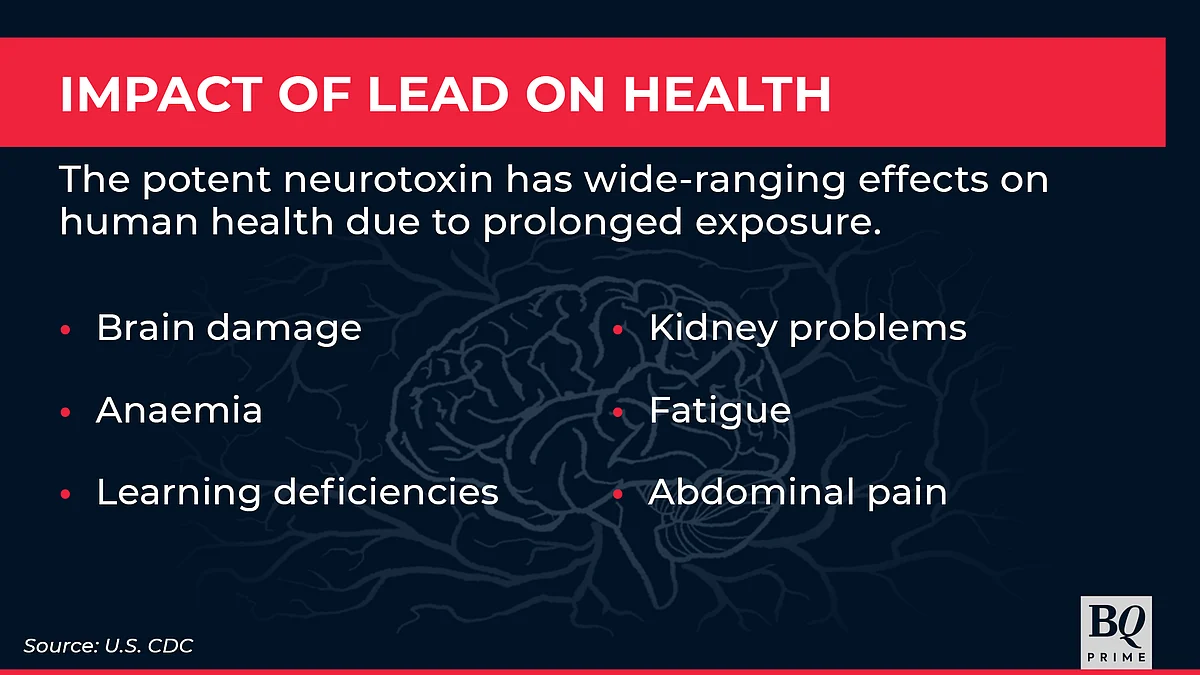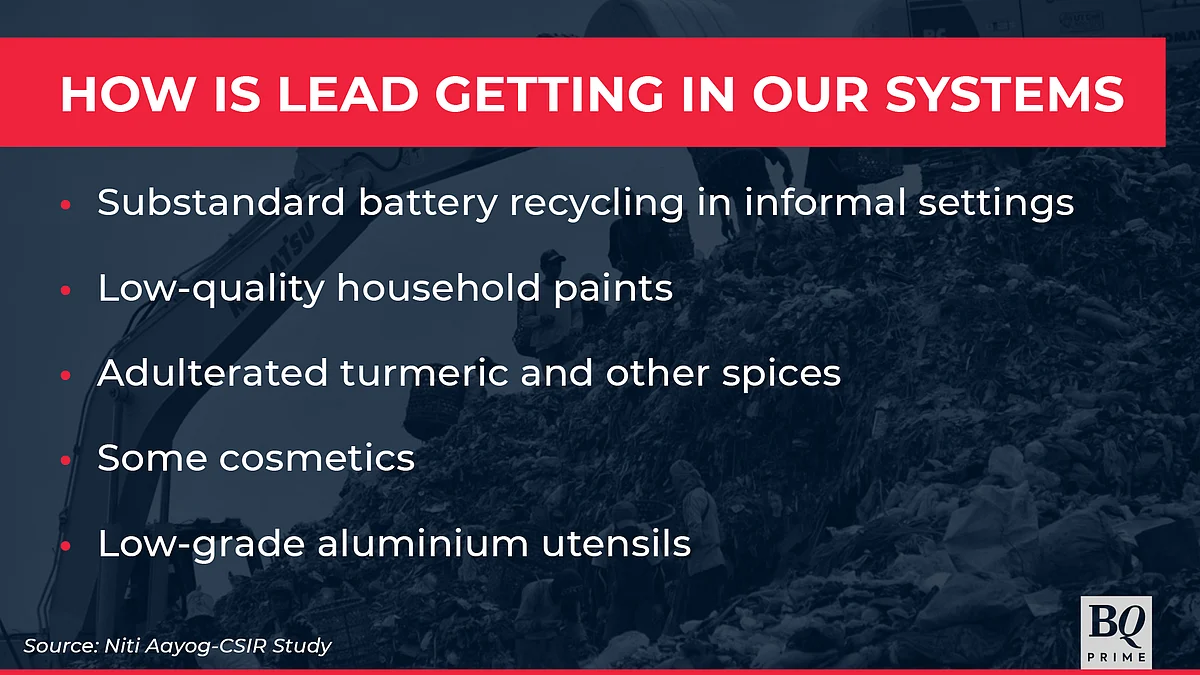A Silent Health Crisis Is Putting Intellectual Growth Of India's Children At Risk
India has the largest prevalence of lead poisoning among children below 19 years of age in the world, according to two studies.

A silent health crisis is putting India's children at risk of intellectual disorders with little-to-no interventions to contain it.
The country has the largest prevalence of lead poisoning among children under 19 years of age in the world, according to a recent study by NITI Aayog and CSIR, and an earlier study conducted by Pure Earth and Unicef. That's causing slow, irreversible brain damage affecting their intellectual capabilities and leading to other health complications.
And yet, awareness remains nearly absent among parents, doctors and the government.
Lead pollution was the topic of discussion at a meeting organised in Delhi on Tuesday, where experts came together to urge civil society members to increase discourse around this crisis.
At the event, findings were presented from the centrally sponsored study that attempted to quantify the extent of lead poisoning among Indian children.
Jointly prepared by the government think tank NITI Aayog and the Council of Scientific and Industrial Research, it corroborated a 2020 report by Pure Earth and Unicef that showed how almost every second child in India had toxic levels of lead in their blood.
"The data clearly shows that we are in trouble," said Rajiv Kumar, former vice chairperson of NITI Aayog. "Add lead poisoning to the already existing problem of malnutrition, (which) means India's expected demographic dividend will not occur. Because the intellectual capability of children will not be there as they grow up."
What's The Big Worry?
Lead is toxic to humans. But poisoning from the base metal isn't easy to catch.
The potent neurotoxin builds up slowly in the blood over several years and leads to irreparable damage to the frontal cortex of the brain—the part that is associated with problem solving, movement, decision-making and personality.
"There are no safe levels of lead in the blood," said Richard Fuller, founder and chief executive of the non-profit Pure Earth. "It is causing increased disability and learning disorders. It also becomes a massive economic loss due to higher healthcare costs and reduced competitiveness."

Every year in India, over 2.3 lakh deaths are attributable to complications from lead poisoning, according to Pure Earth. That's a bigger health burden than even malaria, their study showed.
Besides brain damage, it can cause other lasting problems for heart, lung, liver and kidney health.
Younger people are even more vulnerable as they absorb 4-5 times more lead than adults while their bodily functions are still under development.
How Are People Getting Exposed?
The hazards of lead exposure aren't a new finding. Those had been recognised a few decades ago, when it was being used as an additive in petrol and diesel.
Since then, spiking fuel with lead has been fully phased out. India started taking action in 1994 and completed it in 2000. But despite the phase-out, prevalence of lead in the blood has only increased in the country.
"Just because we stopped adding lead to petrol doesn't mean we solved the problem," said Dr Thuppil Venkatesh, the national chairman for Indian Society for Lead Awareness and Research.
Venkatesh, also known as the 'Lead Man of India', has studied the problem and tried to raise awareness for years now.
There are several sources of lead poisoning in India.
Car batteries that contain lead are regularly recycled in informal settings in India and are a major source of contamination, said Rakesh Kumar, officer on special duty at CSIR, and lead author of the NITI Aayog study.
The unsafe methods of recycling cause lead to seep into the environment where it accumulates in the air, soil and water, and finds its way into humans through the food chain.
Another common source is low-quality house paints. The same study found around 31% of household paints in India had over 10,000 parts per million of lead, even when the regulated limit is less than 90 ppm.
However, according to Kumar, all regulated major paintmakers have fixed that now.
Further, a lot of cosmetic products including kumkum and surma contain traces of lead. A compound of lead is also used to adulterate turmeric—a staple in Indian kitchens. Low-grade aluminium utensils have also been found to be a source of lead poisoning.

Where Is It Most Prevalent?
Twenty-three Indian states were found to have average blood lead levels of over 5 micrograms per decilitre, which is considered a dangerous level.
To be sure, any amount of lead exposure is damaging. In 2021, the U.S. Centers for Disease Control and Prevention updated its numbers to identify 3.5 micrograms as a level of concern and requiring medical intervention.
Bihar, Uttar Pradesh, Madhya Pradesh, Jharkhand and Chhattisgarh were the states where prevalence of lead in the blood was the highest.
In some urban areas, according to TK Joshi, technical adviser to United Nations Office for Project Services (India), it was also "not uncommon" to find blood lead levels of as high as 40 micrograms per decilitre.
What Is Being Done To Address This?
Pretty much nothing.
Rajiv Kumar, who left the NITI Aayog in April this year, said that as of now, lead poisoning is not a priority at any level of policymaking.
"Having commissioned that study when I was at NITI (Aayog), I thought that would suffice to take the ball forward and get it into policymaking," he said. "Unfortunately, not much moved."
Even among top doctors of the country, there was "profound ignorance" about lead poisoning, Joshi said. Looking at the symptoms for lead poisoning was one of the last things doctors considered, he said.
There's also a lack of understanding regarding the issue.
Very few biomonitoring studies have been done in India to figure out the extent of the problem, Venkatesh said. The country needs a cohort of studies so that there is better medical understanding of how lead impacts humans, he said.
According to Venkatesh, there is lack of facilities in the country that are capable of monitoring blood lead levels. Currently, there are only 47 centres—in a country of over a billion people—that are able to screen lead proportion in blood.
Even when screened, one cycle of lead chelating—a procedure to remove lead from blood—can cost about Rs 2,000. That makes it inaccessible to poorer sections of the society who are more likely to be exposed.
What Can Be Done?
The experts said massive public campaigns are needed to raise awareness about the issue.
Some even suggested that studies are needed to conclusively establish the link between lead exposure and mortality, similar to how it has been done for air pollution.
Kumar said a two-pronged approach will be required: to increase social awareness through focused interventions at the state-government level, and to establish a national-level programme on the lines of the Swachh Bharat campaign.
Venkatesh suggested self-regulation. He cautioned against abruptly banning or penalising activities that are the cause of lead pollution, as it could hurt livelihoods of those in the unorganised sector.
"We have to understand that lead inside a battery is completely safe. It only becomes dangerous when we let it enter our environment," he said. "Why should we make pencils that are coated with lead-containing paint? Who is to blame? Lead or ourselves?"